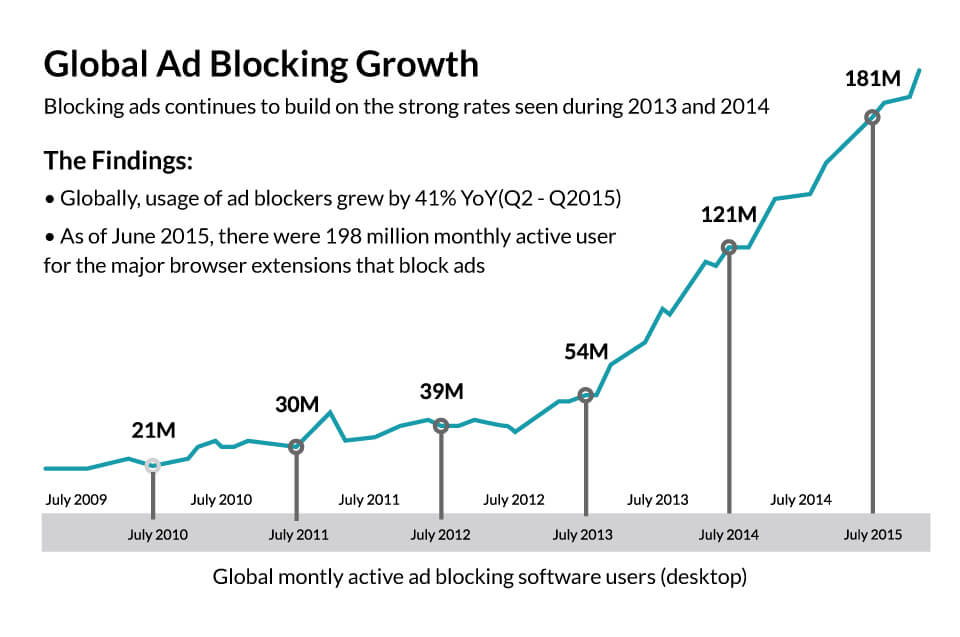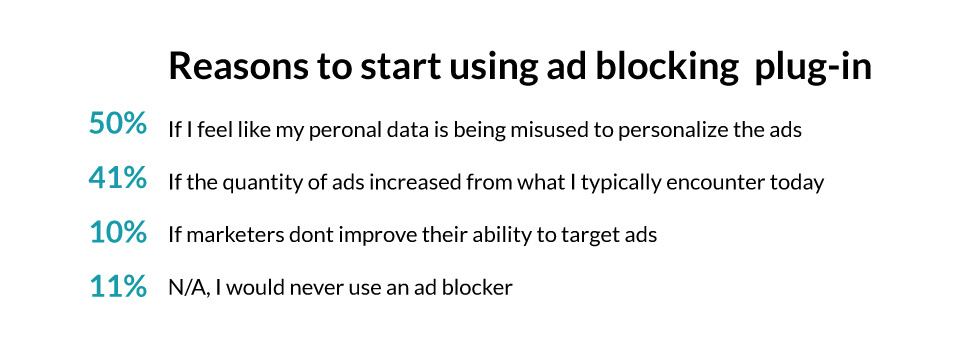Digital media has allowed for significant leaps forward in measuring the efficacy and value of digital advertising, largely driven by advances in technology and tracking methodologies of advertisers.
In addition to enhanced tracking and attribution modeling, the same advances have opened the door for more personalized, and some would say intrusive, ad unit design and deployment.
With the rise of freemium, and entirely free content on the web, consumers have demanded a way to minimize their disrupted consumption of content. Chief among those solutions offered by firms, such as AdBlock Plus are ad blocking apps and embedded opt out options from providers such as apple. According to a report from Adobe, 198 million people are blocking ads globally.

Argument for the use of Ad Blockers
Consumers have searched for ways to make their experiences with brand products and content more enjoyable for decades. In fact, the origination of the “soap opera” comes from CPG giant Procter & Gamble’s desire to offer a more enjoyable experience through custom content in the form of TV dramas. This original format of brand-generated content was the first attempt of a major advertiser to entertain consumers by creating a platform for the likely consumption of their brand message.
In theory the “soap opera” platform worked extremely well and as intended. The messages were so well-received in fact, the networks wanted to jam more advertising into the programs. Although this is great news for network execs and their bottom line, the overload of brand spots diluted the experience for those tuning in.
This push back from consumers, albeit an age-old struggle, has never been more relevant than in today’s digital world and advanced technology. As marketers have become more savvy in how they disrupt a consumer’s typical habits, consumers have become increasingly interested in finding ways to circumvent the advances.
Enter the ad blocking industry. There are many reasons consumers have so quickly gravitated towards ad blocking, but according to the Internet Advertising Bureau (IAB), the primary pain points cited are:
- 73% say ads are interruptive to their experience
- 50% will use ad blockers if they feel their personal data is being misused to personalize the ads
- 41% report a main cause is the increased quantity of ads

There are practical implications of using ad blockers as well as user experience, according to Digiday. Ad blockers do not make pages easier to read, but they do speed up load times and minimize security risks.
Some insight into the issue can possibly be gained from referring to the ethicist and philosopher Kant. According to former Boston University professor of cyberethics, David Whittier, utilitarianism is the clearest defense of ad blocking. He suggests the action that maximizes utility is the most ethical one, and since ad blocking benefits more than those it hurts, it’s an ethical choice.
Argument Against the use of Ad Blockers
The flip side to proponents of ad blocking is the impact on a wide variety of online publishers, news providers and content sources that rely on advertising to monetize their otherwise free content. According to a study released by PaigeFair & Adobe, the online ad revenue lost in 2016 is projected to be over $41 billion. This is an obvious concern not only to online publishers, but also to marketers that invest heavily in digital media ads. There is a pivotal moment quickly approaching in digital marketing where a brand’s message, content and ads’ relevance and native appeal will become the most important factor in getting their message across.
There is also an inherent risk to consumers, assuming a critical mass of users decide to engage in the ad blocking process. Many online publishers and news sources rely entirely, or significantly, on ad revenue as a primary monetization strategy. The result of this could be the disappearance of historically free content from the internet, as Sara Baase, Professor of Computer Science at San Diego State points out.
Solutions for the Ad Blocking Environment of Today
Although the debate rages on, both consumers and advertisers are adapting to the changing environment. Branded content, thoughtful native ad placements and advanced IP address targeting methodologies are allowing for a more enjoyable experience for consumers. Each personalized ad is creating meaningful ways for brands to engage their target audience and deliver the right message to the right person, at the right time.
To learn more about how to evolve with the market and implement innovative ways to engage your target audience, get in touch with LEAP Amp today.